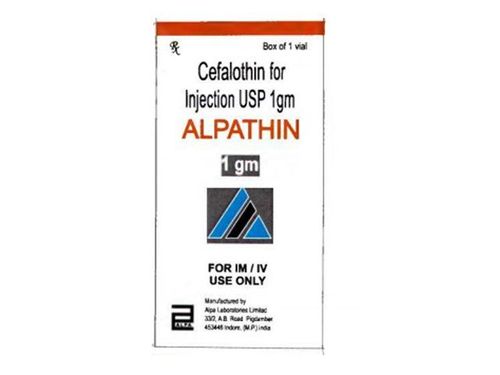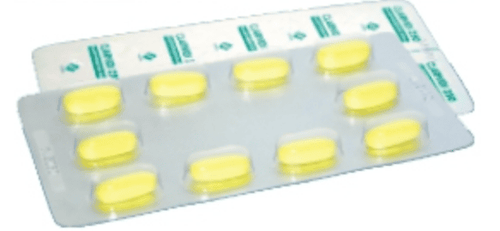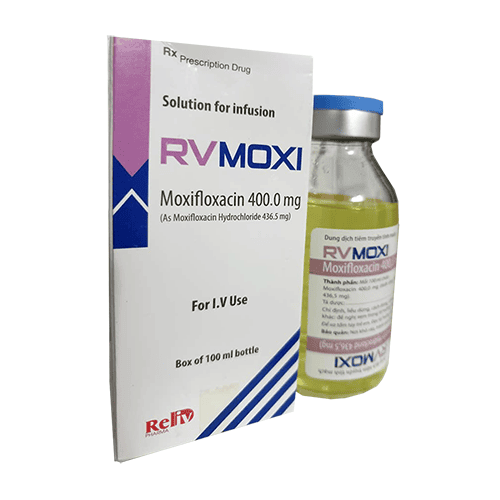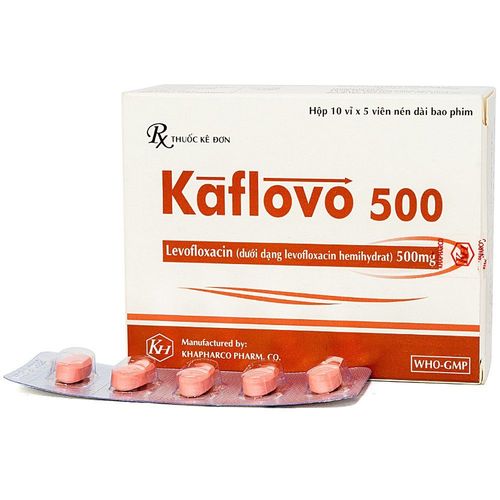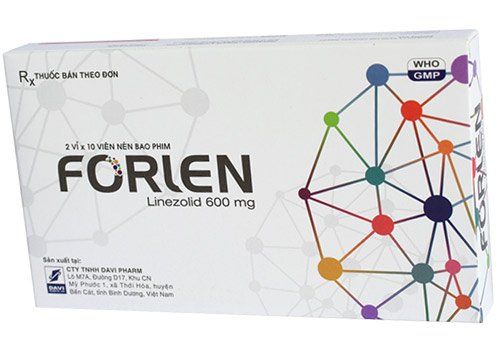This is an automatically translated article.
Post by Master, Doctor Phan Van Phong - Emergency Doctor - Emergency Department - Vinmec Central Park International General Hospital
Pneumonia can appear in many subjects. Most, when infected after only a few days, the body will show characteristic signs. If not treated in time, the patient will gradually become short of breath and have a high risk of death. Therefore, the diagnosis of pneumonia is an extremely important method to help treat and prevent complications of the disease.
1. What is pneumonia?
Pneumonia is defined as inflammation and consolidation of lung parenchyma due to infectious agents such as bacteria, viruses, parasites, fungi. There are 2 common types of pneumonia, they are:
Pneumonia occurring outside the hospital: This is community acquired pneumonia (CAP: Community Acquired Pneumonia). Pneumonia appearing from 72 hours after admission: It is called hospital-acquired pneumonia (HAP: Hospital Acquired Pneumonia) or hospital-acquired pneumonia.
2. Diagnosis of pneumonia
2.1. Diagnosis of pneumonia based on clinical symptoms Pulmonary symptoms suggestive of pneumonia include:
Fever: Usually high fever with chills suggestive of bacterial infection. Chest pain: Often pleuritic in nature suggestive of associated pleurisy. Cough: Can be dry or cough sputum (mucus or pus), sometimes rust-colored sputum (due to pneumococcal) and bloody, may smell bad (due to anaerobic bacteria). Extrapulmonary symptoms include:
Headache. Muscle pain, joint pain. Sore throat. Nausea, vomiting, abdominal pain, diarrhea. Elderly patients have fewer symptoms than younger patients. Typical and atypical pneumonia:
Sudden onset of pneumonia with obvious pulmonary symptoms is called “typical pneumonia”, suggesting pyogenic bacteria such as pneumococcus, staphylococcus , H. influenza.
Pneumonia with insidious onset with nonspecific pulmonary symptoms (mild fever, dry cough, or mucoid cough) but with more pronounced extrapulmonary symptoms is termed “atypical pneumonia”, suggesting causative agent. selling bacteria such as Mycoplasma pneumoniae, Legionella pneumophila, Chlamydia pneumoniae.
Many reputable studies show that the clinical distinction between typical and atypical pneumonia cannot be completely trusted to predict the causative agent. But that is not to say that a thorough history and careful physical examination are not helpful in diagnosing pneumonia.
2.2. Diagnosis of pneumonia is based on physical symptoms Fever:
Usually present. However, some patients present with hypothermia (severe prognostic sign). 20% of pneumonia patients have no fever at the time of admission. Physical symptoms on lung examination suggestive of alveolar injury in pneumonia present in only 20% of cases include:
An audible crackle in the affected lung area. Condensation syndrome: dull percussion, increased vocal fibrillation, decreased alveolar murmur. Whisper chest sounds, bronchial echoes. A pleural rub heard in 10% of cases suggests an associated pleuritic lesion. 2.3. Diagnosis of pneumonia by chest X-ray image When the clinical picture is suspected of pneumonia, the patient should have a chest X-ray. The "cloudy" symptom on chest radiograph is considered the "gold standard" for the diagnosis of pneumonia.
However, the following two situations should be noted:
There is a "cloudy" but not pneumonia (false positive) in the following cases: Pneumonia due to other non-infectious diseases (vasculitis, reaction) medicine); interstitial lung disease; pulmonary edema in congestive heart failure, mitral stenosis; pulmonary infarction; alveolar hemorrhage; atelectasis ; bronchial cancer.
No “blur” but still pneumonia (false sound) seen in the following cases: Dehydration; neutropenia; the disease progressed at an early stage, before the appearance of X-ray symptoms; P. carinii pneumonia in immunocompromised patients (AIDS).
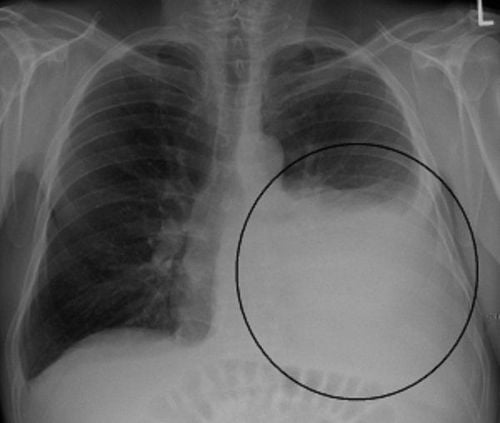
Triệu chứng “đám mờ” trên X quang lồng ngực được xem là “tiêu chuẩn vàng” cho chẩn đoán viêm phổi.
3. Diagnosis of the cause of pneumonia
Diagnosis of the cause of pneumonia is obtained by isolating the causative agent from a culture, but not all specimens are equally reliable:
Diagnosis of the cause is “definite” when blood cultures are positive. count; culture of fluid, pus from the lung/pleural aspiration through the chest wall is positive; presence of P.carinii or M.tuberculosis in sputum, or bronchoalveolar lavage fluid; isolated Legionella pneumophila; titers of antibodies against M.pneumoniae, C.pneumoniae, L.pneumophila in the blood increased by ≥ 4 times through two tests; antigen of S.pneumoniae (urine, blood), L.pneumophila (urine) positive. Diagnosis of the 'probable' cause is when: Pneumonia isolated on sputum culture is a common, well-developed pathogenic pneumonia, with appropriate sputum smear results; Pneumonia isolated on sputum culture is not a common pathogenic type of pneumonia, develops weakly, and sputum smear results are consistent.
4. Diagnosis of pneumonia severity
4.1. Diagnosis of pneumonia requiring hospitalization Pneumonia requires hospitalization when one of the following criteria is met:
Patient > 65 years old. Other serious comorbidities (eg, kidney, heart, lung disease, diabetes, malignancy, immunocompromised disease). White blood cell count < 5000/mm3 provided there is no other known cause. The cause of pneumonia is suspected to be caused by staphylococci, gram-negative bacilli, and anaerobic bacteria. There are pyogenic complications due to pneumonia (purulent pleura, arthritis, meningitis, endocarditis). Failure of outpatient treatment. Patient cannot drink. Tachypnea (>30 breaths/min), tachycardia (>140 beats/min), low blood pressure (MAX BP < 90 mmHg, hypoxemia (PaO2 < 60 mmHg), acute altered mental status 4.2. Diagnosis of severe pneumonia Pneumonia is considered severe when at least one of the following criteria is present:
Respiratory rate > 35 breaths/minute Hypoxemia is defined as: PaO2/FiO2 index < 250 or oxygen required. have a FiO2 > 35% to maintain a SaO2 > 90% Ventilate Chest radiograph showing rapidly worsening pneumonia defined as pulmonary opacity increased by 50% after 36 hours Shock. This definition applies to both community-acquired and hospital-acquired pneumonia
4.3 Prognosis of severe, potentially fatal pneumonia Prognostic factors for pneumonia will be severe, possibly fatal :
Patient background: Age > 65; have comorbidities that can aggravate pneumonia, especially chronic kidney failure, ischemic cardiomyopathy, congestive heart failure, severe COPD, cystic fibrosis, Recurrent aspiration with coexisting malignancy ch: After splenectomy, alcohol abuse is taking immunosuppressive drugs, acquired immunodeficiency syndrome (AIDS). Clinical symptoms: Consciousness disorder; respiratory rate > 30 breaths/minute; MAX blood pressure < 90 mmHg, MIN BP < 60 mmHg; Hypothermia. Subclinical symptoms: Hematological symptoms such as leukopenia < 3000/mm3 or increase > 30,000/mm3; Blood hemoglobin < 0.9 g%. Blood biochemical symptoms such as serum creatinine > 1.5 mg% or BUN > 20 mg%; PaO2 < 60 mmHg or PaCO2 > 48 mmHg with atmospheric oxygen; Blood albumin < 30 g/liter. Microbial symptoms include pneumonia caused by P. aeruginosae or S. aureus; positive blood culture pneumonia. X-ray symptoms with lesions in ≥ 2 lobes of the lung; pleural effusion next to pneumonia is large, complications of abscess, rapid deterioration of chest radiograph. Requires mechanical ventilation, acute respiratory distress syndrome (ARDS) and sepsis.

Đối với các bệnh nhân được chẩn đoán viêm phổi mà có các bệnh nặng khác đi kèm thì phải nhập viện để điều trị
5. Diagnosis of pneumonia complications
Local complications:
Acute respiratory failure, death. Abces lung. Empyema, pneumothorax. Other organ complications:
Infective endocarditis, empyema of the pericardium. Meningitis. Acute renal failure, acute liver failure. Sepsis, septic shock. Autoimmune arthritis. In short, pneumonia is a common disease, the degree of progression in each person will not be the same. Immunization is the best way to prevent pneumonia, especially viral pneumonia. Besides, the doctor also encourages people to build a healthy lifestyle, practice good hygiene habits and strengthen the immune system to reduce the risk of pneumonia.
Currently, Vinmec International General Hospital is implementing a vaccination program suitable for all ages, from infants, children, adolescents and adults. The benefits that customers receive when choosing to get vaccinated at Vinmec include:
Being examined by specialist doctors, fully screened for physical and health problems, counseling on preventive vaccines and injection regimen, monitoring and post-vaccination care before the appointment of vaccination according to the latest recommendations of the Ministry of Health & World Health Organization to ensure the best effectiveness and safety. A team of experienced, professional pediatric doctors and nurses, understand psychology and apply effective pain relief during the vaccination process. 100% of vaccinated customers are monitored 30 minutes after injection and reassessed before leaving. Underwent general supervision before, during and after vaccination at Vinmec Health System and always have an emergency team ready to coordinate with the vaccination department to handle cases of anaphylaxis, respiratory failure - circulatory arrest, ensuring Ensure timely and correct handling when incidents occur. The vaccination room is airy, with a play area, helping children feel comfortable as if they are walking and have a good mentality before and after vaccination. Vaccines are imported and stored in a modern cold storage system, with a cold chain that meets GSP standards, keeping vaccines in the best conditions to ensure quality. You will receive a reminder message before the vaccination date and your baby's immunization information will be synchronized with the National Immunization Information System.
Please dial HOTLINE for more information or register for an appointment HERE. Download MyVinmec app to make appointments faster and to manage your bookings easily.




